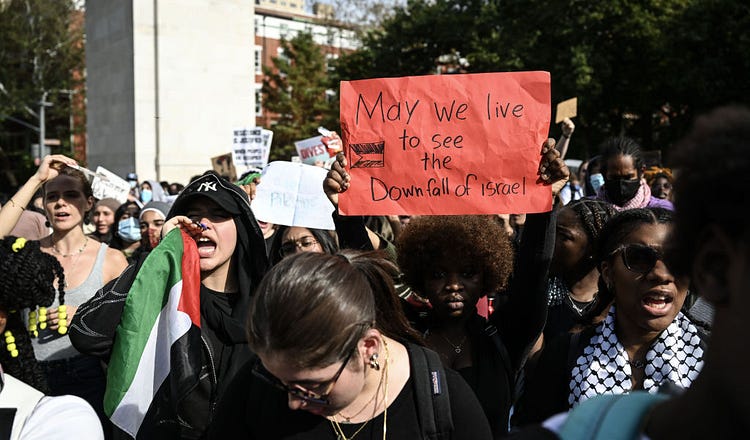Shocked by the Jew-Hate on College Campuses? I Wasn’t.

New York University students rally at Washington Square Park in New York on October 25, 2023. Protesters chanted slogans while waving. (Fatih Aktas via Getty Images)
For several decades, institutions have incubated a worldview, based on revisionist history, that seeks to justify the murder of Israelis and Jews.
110
The antisemitism on display at dozens of elite universities may come as a shock to many. But it does not surprise me.
My first day of orientation at Harvard Divinity School was on September 11, 2001. I had come to the Divinity School to study contemporary thought in Judaism and Islam. Truth—veritas—is Harvard’s motto, but not, I soon discovered, what the…
Continue Reading The Free Press
To support our journalism, and unlock all of our investigative stories and provocative commentary about the world as it actually is, subscribe below.
$8.33/month
Billed as $100 yearly
$10/month
Billed as $10 monthly
Already have an account?
Sign In


